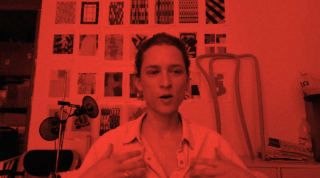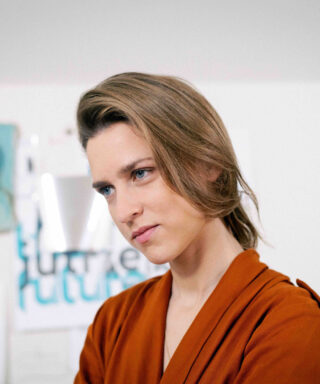Maria Jeglinska-Adamczewska
Interview : 1

Grant Gibson [GG]: You’re back in your studio now but how have you found working from home?
Maria Jeglinska [MJ]: At the beginning it was fine. I used to work from home when I started my own office but that was for economic reasons. The studio is where I really work. Then I leave it behind and enjoy home the way I think it should be enjoyed.
GG: How has the pandemic effected your practice?
MJ: Our lockdown started on 12 March so I moved the entire office into my home and I’m working remotely with my assistant via Skype or FaceTime. I’m not sure it has effected the work but it has opened my eyes about working from the home and the quality of space you’d want to achieve. I’ve also been reminded of the emotional comfort objects can give you. They provide a sense of identity and are capable of communicating who you are to other people.
"I’ve also been reminded of the emotional comfort objects can give you."
GG: What do you think of working with tools like Zoom?
MJ: Conversations like the one we’re having now are great but they will never replace the physical encounter. You get to know people better, connections are stronger. When you’re working with a company to make a product, relationships and trust are really important. What’s interesting now is how people are having work encounters in their homes. In these Zoom meetings you can see how people live. I don’t have kids yet but if you do I can imagine what a struggle it must be right now.
GG: What piqued your interest in the project initially?
MJ: I’d seen what AHEC had done over the years at the London Design Festival. I liked the idea of collaborating with Benchmark too, working with them on a technical level and discovering the range of possibilities with timber. You have carte blanche. On the other hand it’s a little bit overwhelming because you don’t have a specific framework that a manufacturer might give you. You don’t have those constraints that designers usually have to operate in. It’s a different balance between designer and maker.
GG: What is it you love about timber?
MJ: It’s a material that’s easily scalable – so you can create anything from houses to jewellery with it – but also I enjoy its tactility. So much of our lives have moved online, especially now, but we still need to be able to touch real materials.
GG: Can we talk about your process? How do you approach a project like this?
MJ: I do a lot of reading. I call it the warm-up time. And then I do a lot of drawing – I think I’ve already filled three sketch books. Sometimes I’ll just repeat the same form over and over again. I don’t know why. It could be the right path but it might also be something I need to exorcise. After that I’ll do a few mock-ups to see how the pieces feel. You want this object to have a nice presence, almost a sculptural feel.
GG: What about the timbers themselves? How are they effecting your thinking?
MJ: I’m looking at using American cherry and steamed maple. I think I’ll use them in combination. I’ll see how the project comes together and I’ll discuss it with Sean at Benchmark. But I love the colour and grain of the cherry. I wish I could use them all!
GG: How does a project like this sit in your portfolio?
MJ: Over the years I’ve worked on different scales from curating shows to designing products. Currently I’m designing more products but work goes through different phases. I’m really happy because I’ve done a few trials with chairs but this will be only the second I’ve ever done. And in wood, which I’ve wanted to work in for a long time. So in terms of typology it’s a bit of a dream.
"I’m really happy because I’ve done a few trials with chairs but this will be only the second I’ve ever done."
GG: Does working digitally and not being able to visit the manufacturer make a difference to your process?
MJ: We’ve been really well prepared and supplied with various films showing what Benchmark can do. But it’s still a bit frustrating obviously. Going to the workshop would make the process so much faster – you might see something that the camera won’t necessarily catch. There are a lot of things that happen out of chance. So I miss that.
GG: What can we expect from you?
MJ: Right now I’m still working on the concept. I’m interested in creating objects that are in-between architecture and furniture that allow people to create their own space. I’ve been looking at the typology of office chairs as well as doing some research on The Shakers. They were a community that was self-sufficient and also lived and worked in the same space.
GG: How do you judge success when you’re working on a project like this?
MJ: It’s an interesting one because the project isn’t connected to the market, so it isn’t about sales. That’s the beauty of it. It’s an expression of our thoughts and reflections on these times.
